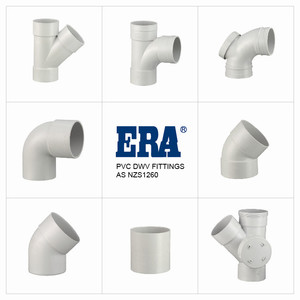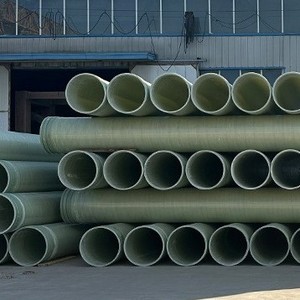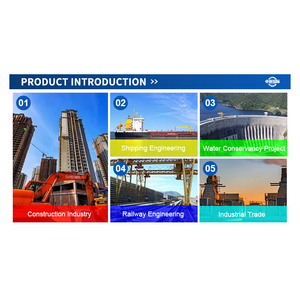(2671 products available)










































































































































































A pipe grate is a heavy-duty metal grid or mesh used to cover open areas for air ventilation. It comes in various types, each serving different purposes and areas. The following are the types of pipe grates:
Sink Pipe Grates:
Sinks and lavatories usually come with a drain grate or strainer that fits into the drainpipe. This kind of pipe grate collects debris and prevents clogs in the drainpipe. It is usually made from metal, such as brass, stainless steel, or chrome, and has a screw-on or pop-up design that makes it easy to remove and clean. The sink pipe grate is an essential part of the plumbing system under any sink.
Cast Iron Grates:
Cast iron pipe grates are popular in outdoor settings or areas where durability is essential. They can handle heavy traffic and are long-lasting. These grates come in various designs, like decorative Victorian patterns or simple, functional grids. Cast iron is corrosion-resistant when properly maintained, usually through painting or powder coating.
Steel Grates:
Steel grates are like cast iron in strength and durability. They are often galvanized or coated to prevent rust. These grates are versatile and can be used in industrial or residential settings. They are also easy to manufacture and customize for different sizes and shapes of pipes.
Aluminum Grates:
Aluminum grates are suitable for areas where weight is a factor. They are lightweight but still strong. These pipe grates do not rust and are often used in coastal areas or places with high humidity. Aluminum pipe grates are also aesthetically pleasing, with many finishes available.
Brass Grates:
Brass grates are mainly used in bathrooms and kitchens. They have a beautiful, warm tone that adds a touch of elegance. Brass is naturally antimicrobial, which makes these pipe grates suitable for sinks and lavatories. They are also resistant to corrosion, mainly when exposed to water and moisture.
Plastic and Composite Grates:
These lightweight alternatives to metal pipe grates are used in areas where corrosion resistance is essential. They are commonly found in swimming pools, outdoor showers, and areas near the water. Plastic and composite pipe grates are available in various colors and styles to match the surrounding decor.
Perforated Grates:
They feature a pattern of holes or slots that allow water to pass through while trapping debris. Perforated pipe grates are prevalent in kitchens and bathrooms, where they are placed over sinks and showers to prevent hair and other materials from clogging the drain.
When buying cast iron radiator covers for sale, it is important to consider the features and functions of each type. Some important features to look for include:
Material:
Pipe grates are made from different materials offering different benefits. For instance, aluminum is lightweight and resistant to rust, making it ideal for outdoor applications. Cast iron is heavy-duty and can withstand harsh conditions, while steel is strong and durable.
Design and pattern:
Pipe grate designs and patterns differ from each other. Some have simple and functional designs, while others feature intricate and decorative patterns. The choice of design depends on the application and aesthetic preference.
Load capacity:
Different types of pipe grates have varying load capacities. For example, industrial-grade pipe grates are designed to support heavy loads, while others are suitable for lighter loads in residential settings.
Surface finish:
The surface finish of a pipe grate plays an important role in its durability and appearance. Common surface finishes include powder coating, galvanized, and painted. These finishes offer resistance to rust and enhance the visual appeal of the grate.
Size and dimensions:
Pipe grates come in different sizes and dimensions to fit various pipes and applications. When choosing a pipe grate, ensure it matches the size of the pipe it is intended to cover.
Ventilation:
Most pipe grates are designed to allow proper airflow and ventilation. This is important in preventing heat buildup and ensuring efficient pipe function, especially in radiator applications.
Easy installation:
Pipe grates are designed for easy and simple installation. Most of them come with pre-drilled holes and installation hardware, making the installation process hassle-free.
Maintenance:
Pipe grates are easy to maintain. They are easy to clean and resistant to rust and corrosion, ensuring they maintain their appearance and durability for many years.
Pipe grates are used across multiple industries and applications. Here are some common industry applications:
Construction
Steel construction pipe grates are widely used in the construction industry. They are used as structural support in the construction of walkways, driveways, bridges, HVAC systems, and lots more. They offer a safe and cost-effective solution for heavy-load applications in construction.
Automotive Industry
Automotive pipe grates are used in the construction of vehicles, including cars, motorcycles, trains, and ships. They are used in constructing chassis, exhaust systems, and other structural components. They are valued for their lightweight and high-strength properties, which improve vehicle efficiency and speed.
Aerospace Industry
Grates made from pipes are used in the aerospace industry to manufacture aircraft components, including fuselage, wings, and landing gear. Aerospace pipe grates are preferred because they are lightweight and have high strength. This makes them suitable for aircraft applications.
Oil and Gas Industry
Pipe grates are used in the oil and gas industry for drilling, transportation, and refining of oil and gas. They are used to make drill pipes, casing pipes, and structural supports in oil rigs and pipelines. Their corrosion resistance and high-strength properties make them suitable for high-pressure and harsh environments.
Manufacturing
In the manufacturing industry, steel construction pipe grates are used in the production of machinery, equipment, and structures. They are used in conveyor belts, machinery frames, and structural supports in factories and plants. Their durability and lightweight properties make them suitable for manufacturing applications.
Infrastructure
Pipe grates are used in infrastructure projects such as bridges, tunnels, and railways. They provide structural support and reinforcement in these applications. Their cost-effectiveness and ease of installation make them a popular choice in infrastructure projects.
Electrical Industry
In the electrical industry, aluminum construction pipe grates are used in the manufacturing of electrical components, including wiring, connectors, and support structures. Aluminum grates are particularly useful in electrical applications due to their lightweight and conductivity properties.
Recreational Industry
Recreational vehicles, bicycles, and other sporting equipment are often made using pipe grates. This is because they are lightweight and have high strength. Additionally, they are used in the construction of playgrounds and sports facilities due to their durability and safety features.
Q1: What are the load-bearing capabilities of pipe grates?
A1: The load-bearing capability depends on factors like the size and thickness of the pipe, the spacing between the grates, and the material used to make the grate. Engineers can calculate the expected deflection and stress to determine the load-bearing capacity.
Q2: How are pipe grates installed and maintained?
A2: Installation requires welding or bolting the pipe grids to support beams. Maintenance involves regular inspections, cleaning, and checking for loose connections. The service life depends on the material and maintenance practices.
Q3: What are the design options for pipe grates?
A3: The design options include round or rectangular tubes, grid spacing and patterns, and tube diameter and wall thickness. The application requirements determine the optimal design.
Q4: What are the applications of pipe grates?
A4: The applications include industrial flooring, walkway construction, platform surfaces, and machinery casing. Other applications include stair treads and drainage covers.
Q5: What factors affect the lifespan of a pipe grate?